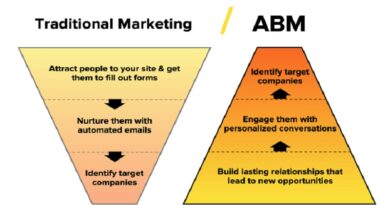The Role of ABM in Unlocking the Full Potential of Product-Led Growth
Account-based marketing (ABM) has long been recognized as a powerful strategy for targeting high-value accounts through personalized engagement, while product-led growth (PLG) has emerged as a dominant approach that leverages the product itself as the primary driver of acquisition, adoption, and expansion. When combined, these two strategies create a powerful synergy that helps organizations not only reach the right accounts but also drive sustained growth through meaningful product experiences. Understanding how ABM fits into a PLG motion is essential for companies seeking to maximize both customer acquisition and long-term value.
In a PLG model, the product often serves as the first point of interaction with potential customers. Prospects typically engage through free trials, freemium offerings, or self-serve demos. While this creates a broad entry point, ABM helps refine the focus by identifying and prioritizing the accounts most likely to convert into high-value customers. By aligning targeted marketing campaigns with product usage data, ABM enables organizations to concentrate efforts on the accounts demonstrating meaningful engagement, rather than spreading resources across a wide but less promising audience.
ABM also plays a vital role in personalizing the journey within a PLG framework. As users interact with the product, ABM campaigns can deliver tailored content, resources, and messaging that directly address specific use cases, challenges, or opportunities uncovered through product analytics. This enhances the user experience, strengthens engagement, and encourages deeper adoption. Over time, it builds a bridge between the initial self-serve experience and the larger enterprise-level opportunities that ABM is uniquely positioned to capture.
Another advantage of integrating ABM into PLG lies in expansion and retention. Product-led growth naturally fosters bottom-up adoption, where individuals or small teams begin using the product. ABM can identify these usage signals within key accounts and coordinate with sales teams to nurture executive-level relationships, positioning the product as a strategic solution for the entire organization. This alignment accelerates account expansion, boosts customer lifetime value, and helps companies maintain a competitive edge.
Ultimately, ABM and PLG are not opposing strategies but complementary ones. ABM ensures precision targeting and relationship building, while PLG fuels organic product adoption and engagement. Together, they create a growth engine that is both scalable and sustainable, enabling businesses to capture, grow, and retain their most valuable customers.




